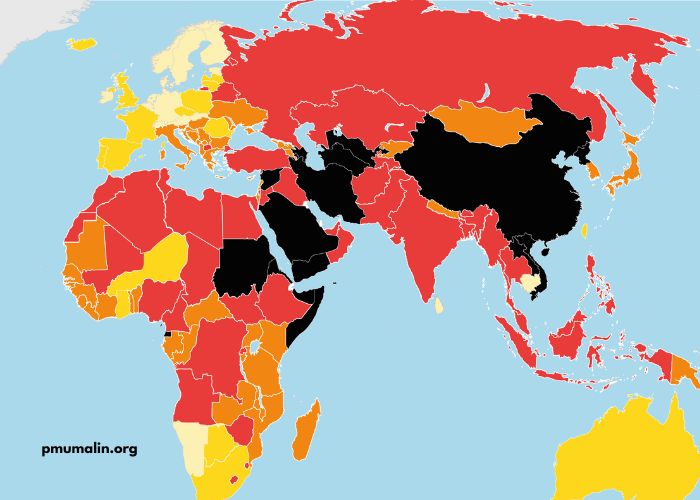The world of media is vast and continuously evolving, with numerous press outlets competing for attention, credibility, and influence. Among the tools that help make sense of this crowded landscape is the Classement DE LA Presse, a systematic ranking of media organizations primarily in the French-speaking world. This ranking evaluates various aspects such as circulation, reach, influence, and journalistic quality to present an organized overview of the media ecosystem.
As the media environment becomes increasingly digital and diversified, understanding the Classement DE LA Presse is crucial for readers, advertisers, and media professionals alike. It not only reflects the current media climate but also drives innovation and quality across the press industry.
What Is The Core Purpose Of Classement DE LA Presse?
At its essence, the Classement DE LA Presse aims to rank newspapers, magazines, and digital publications to provide clarity about their market position and reliability. This ranking system is designed to highlight those outlets that are most influential and widely read, offering both advertisers and readers a dependable guide.
For advertisers, the Classement DE LA Presse functions as a critical reference point, helping them invest wisely by selecting media outlets with the best reach and engagement for their campaigns. For readers, it acts as a trust indicator, enabling them to identify high-quality news sources amidst a sea of information. Therefore, the Classement DE LA Presse serves a multi-faceted role, promoting transparency and competitiveness within the press sector.
How Are Media Outlets Evaluated In The Classement DE LA Presse?
The process of evaluation in the Classement DE LA Presse is both comprehensive and multifaceted. One of the main metrics used is circulation numbers, which represent the total number of copies distributed, either physically or digitally. These figures remain a foundational indicator of a publication’s popularity and influence.
However, circulation alone does not paint the full picture. Modern rankings also assess online presence, including website traffic, social media following, and reader engagement. These digital metrics have become increasingly significant as media consumption shifts towards digital platforms. Additionally, the editorial quality, including the accuracy of reporting, depth of coverage, and investigative journalism efforts, is critically evaluated. This ensures that the Classement DE LA Presse reflects not just popularity but also journalistic integrity.
What Trends Are Currently Influencing The Classement DE LA Presse?
Media consumption habits are rapidly changing, significantly impacting the Classement DE LA Presse. The growth of digital media has shifted the landscape away from traditional print publications towards online news outlets and digital-first media companies. This evolution means that digital subscriptions, mobile app usage, and interactive content are vital factors in rankings today.
Moreover, the diversification of content formats is a key trend. Media outlets producing multimedia content such as videos, podcasts, and interactive infographics often see higher engagement, which positively influences their ranking. The ability to adapt to technological advancements and consumer preferences is critical for maintaining or improving a position in the Classement DE LA Presse. Traditional media companies must innovate or risk losing relevance in this new digital age.
In What Ways Does The Classement DE LA Presse Impact Journalistic Standards?
The influence of the Classement DE LA Presse extends beyond mere numbers. It plays a crucial role in encouraging higher journalistic standards. Media organizations vying for a better ranking are motivated to invest in fact-checking, in-depth reporting, and ethical journalism practices. Maintaining credibility is vital as it directly correlates with audience trust and long-term readership.
This ranking system also encourages transparency and accountability in news production. Outlets with questionable practices or poor-quality reporting risk damaging their reputations and falling in the rankings. As a result, the Classement DE LA Presse indirectly fosters a more trustworthy media environment, which benefits both the press and the public.
What Challenges Do Media Outlets Face Regarding The Classement DE LA Presse?
Despite its benefits, the Classement DE LA Presse presents several challenges for media outlets. Smaller or regional publications often struggle to compete with larger, well-funded organizations. Their limited budgets may restrict investments in digital infrastructure, quality journalism, or marketing, which are essential to climb in the rankings.
Additionally, the demand for rapid news delivery in the digital age sometimes leads to the prioritization of speed over accuracy. This pressure can undermine journalistic standards, potentially affecting an outlet’s ranking negatively. The prevalence of misinformation and the struggle to maintain public trust are constant hurdles that media organizations must overcome to improve or sustain their position within the Classement DE LA Presse.
How Can Readers Benefit From Understanding The Classement DE LA Presse?
For readers, the Classement DE LA Presse is an invaluable tool for navigating the overwhelming number of news sources available today. By referring to this ranking, readers can identify the most credible and reliable publications, helping them avoid misinformation and sensationalism.
Furthermore, the Classement DE LA Presse encourages a more diversified media diet. Readers are prompted to explore different outlets, including emerging digital platforms that rank highly. This variety allows for a richer and more balanced perspective on current events, which is crucial in developing informed opinions. Understanding the ranking thus promotes media literacy and contributes to a healthier public discourse.
Conclusion
The Classement DE LA Presse is much more than a simple list; it is a dynamic reflection of the current state of the media industry. It highlights the most influential and credible media outlets while driving improvements in journalistic quality and transparency.
For advertisers, readers, and media professionals, this ranking is a vital guide that fosters informed decisions and supports a robust, trustworthy press environment. In an era where reliable information is more important than ever, the Classement DE LA Presse offers clarity, accountability, and insight, reinforcing the critical role of quality journalism in society.
